
 |
|
#1
|
|||
|
|||
|
How long should I wait after wet sanding nitrocellulose lacquer before I use my buffing wheel? I'm on my third nitro finish and I'm still looking to perfect my process. So far I have not waited at all between wet sanding and hitting the buffing wheel. I'm just wondering if I need to add some wait time into my process.
|
|
#2
|
|||
|
|||
|
I commonly hear of builders waiting 3-4 weeks after the final coat before level sanding, sanding up through the grades, and buffing.
Nitrocellulose lacquer continues to soak in and shrink back for a long time. In level sanding too early, you risk the chance of the shrink back exposing imperfections that you thought you had sanded out. |
|
#3
|
|||
|
|||
|
Sorry I wasnít a little more clear. My process is to spray all my coats then wait 4 to 5 weeks before wet sanding. Thatís not where my question comes in. I am wondering if I should wait a few days between wet sanding and starting on the buffing wheel.
|
|
#4
|
|||
|
|||
|
No need to wait between sanding and buffing.
|
|
#5
|
|||
|
|||
|
Thank you sir. I thought I was ok to do it the way Iím doing it now. Iím trying to get the process perfect and my last attempt was good but not great. Iím trying to narrow things down. I have some scratches left in the finished product that are noticeable with low angle light and glasses. I think I sanded with too much pressure, then failed to get the those scratches out with subsequent grits, or I contaminated by buffing wheels, or I used too much pressure on the buffer. I tend to be a little impatient. At least I have eliminated softening the lacquer then buffing too soon. I was already pretty sure that wasnít the issue. I just needed to hear it from someone who knows. I have already made notes to use better technique on the other potential issues.
|
|
#6
|
|||
|
|||
|
Approximately zero seconds
 There is water in your buffing compounds anyway so have at it. |
|
#7
|
|||
|
|||
|
Patience is required to go from this, so slow and steady, take breaks, dont get it to hot....
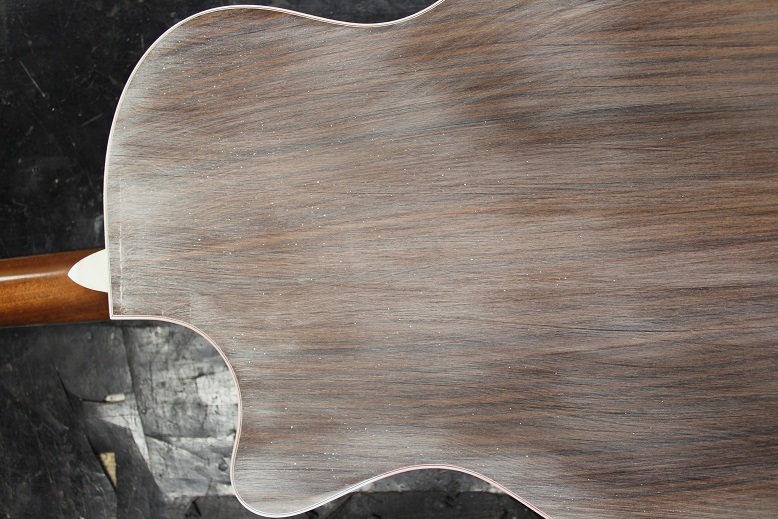 to this 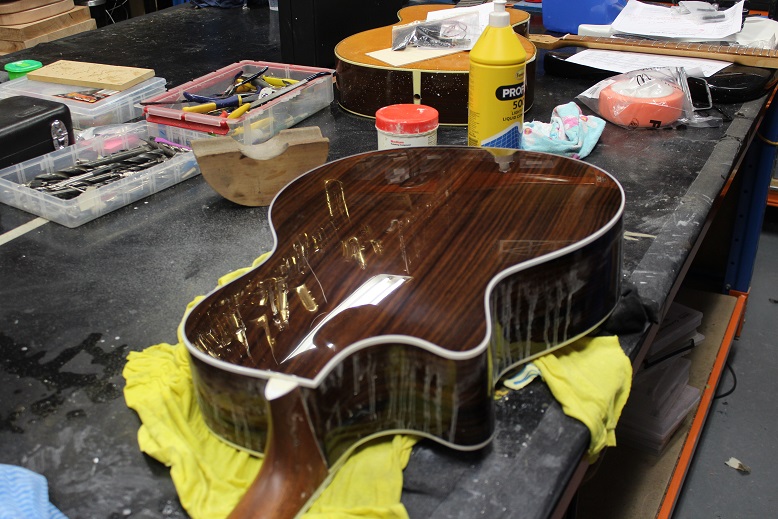 ?? some reasons photos not uploading now
__________________
Cole Clark Fat Lady Gretsch Electromatic Martin CEO7 Maton Messiah Taylor 814CE |
|
#8
|
|||
|
|||
|
Quote:
Ron |
|
#9
|
|||
|
|||
|
That one was a catalysed finish this one is nitro,
The depth of clear you can get into a nitro finish is really unmatched IMO During the paint stage 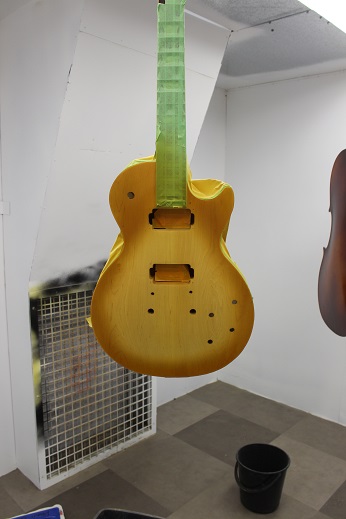 After the buffing stage 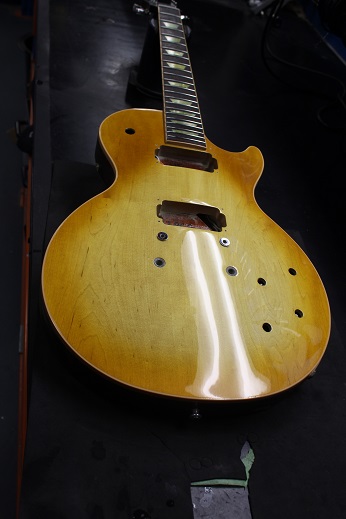 Assembled and final hand polish 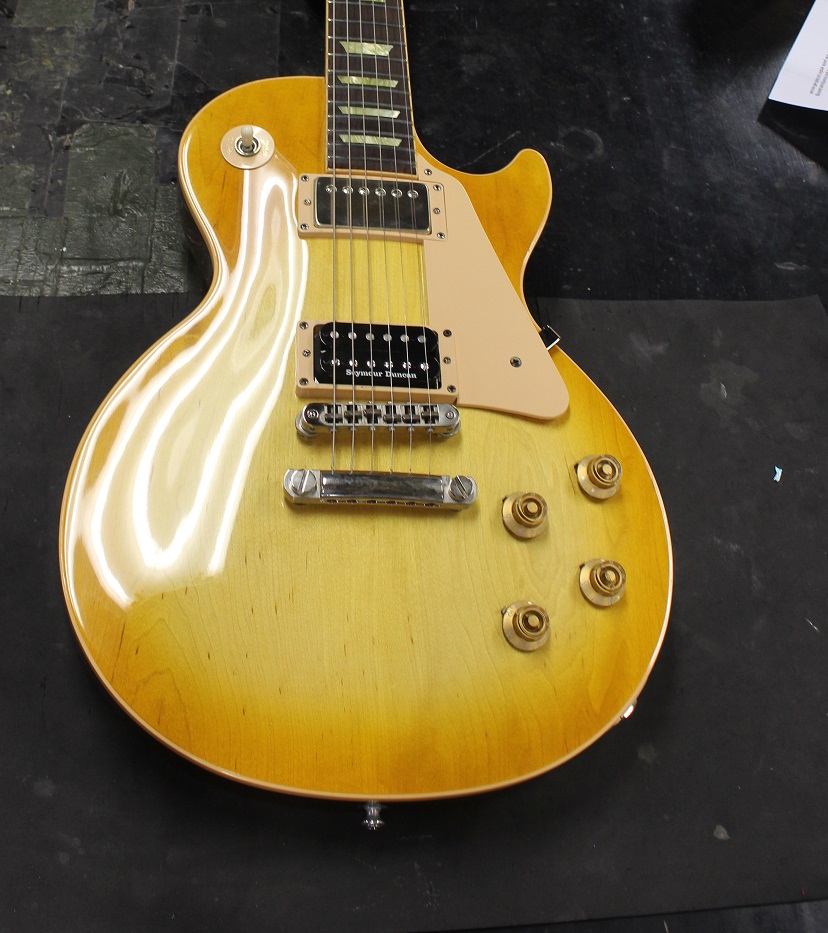
__________________
Cole Clark Fat Lady Gretsch Electromatic Martin CEO7 Maton Messiah Taylor 814CE |
|
#10
|
|||
|
|||
|
Beautiful! What are you using for the final hand buffing?
|
|
#11
|
|||
|
|||
|
Well dang! That looks great. What kind of Nitro did you use and how did you buff it?
|
|
#12
|
|||
|
|||
|
This is my 3rd attempt. It's an amazing set of curly Claro Walnut. This is also my first attempt to post images. Can anyone see the pic? I can if I right click and open it in another tab. I'm open to suggestions on improving my picture posting abilities as well. LOL

|
|
#13
|
|||
|
|||
|
Quote:
Scratches can, as you suggest, be left by contamination between buffing wheels. In my experience, it is more likely scratches that, as you stated, aren't removed from earlier stages of sanding/levelling. My experience is that not all "sandpaper" is created equal. For best results, a good abrasive sheet is required, one that leaves a uniform scratch size: less expensive abrasive sheets seem to leave a greater variation in scratch size, making it more difficult to remove the deeper scratches in subsequent sanding. What abrasives do you use now and in what grits and for what purposes (i.e. in what sequence)? |
|
#14
|
|||
|
|||
|
I use 320 grit Norton ProSand dry to level between every 4 coats of lacquer. To wet sand I use 3M Wet or Dry from LMI. I probably need to look for it somewhere else for a better price. I think it's pretty good paper. I use 600 and 1200 grit wet on the 3M paper. Then I use Menzerna Brown, Pink then White on my buffing wheel. Then Meguiars to do the final hand polish. I would go at this one again, but I'm down to .005 film thickness as measured on the lacquer removed from the bridge location. This one is for me so I'll just live with the slight flaws. Most people won't even see them. At first I though that lacquer would be easier than the first 8 guitars I frenched polished with shellac, but it's not easier, maybe less physical work, but not easier.
https://www.lmii.com/wet-or-dry-poli...-5-sheets.html https://www.rockler.com/norton-prosa...paper-20-packs Last edited by Rmouton; 12-16-2020 at 11:09 AM. |
|
#15
|
|||
|
|||
|
LMII doesn't state the brand of paper. It is too big of a jump to go from 600 to 1200: that's the likely source of your scratches. The 1200 won't take out the 600 scratches, at least in "finite" time.
I use Norton 3X papers for some wood sanding. I've found that Mirka mesh is very good for wood sanding, particularly with attached vacuum dust collection, such as with a random orbital sander or hand sanding block. With a vacuum attachment, it cuts way down on dust in the air. Micromesh brand for finer abrasive "papers" works very well for me. The compounds sound fine. |